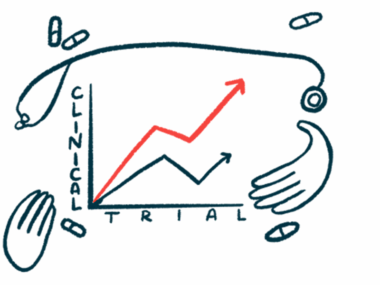Machine learning may help predict disability progression in MS: Study
Algorithm showed good accuracy in predicting worsening disability
Written by |

A machine learning algorithm may be able to accurately predict whether or not people with multiple sclerosis (MS) will experience a worsening of disability in the near term — which may help tailor treatment decisions and improve patient quality of life — according to the findings of a new global study.
The study found that an algorithm created by its scientists had good accuracy in predicting disability progression for certain patients.
The results “support the vast potential of machine learning models for helping patients planning their lives and clinicians optimizing treatment strategies,” Edward De Brouwer, PhD, co-author of the study at KU Leuven in Belgium, said in a press release.
According to the researchers, the validation provided by the study “suggests machine-learning models can reliably inform clinicians about the future occurrence of progression and are mature for a clinical impact study.”
The model was described in “Machine-learning-based prediction of disability progression in multiple sclerosis: An observational, international, multi-center study,” which was published in the journal PLOS One.
Machine learning model aimed to predict near-term MS worsening
MS is a progressive disorder marked by disabling symptoms that tend to get worse with time. But the disease can manifest very differently from person to person, and it’s still very difficult to accurately predict whether any given person with MS is likely to experience worsening disability.
Thus, a team of more than 60 scientists, led by De Brouwer and Thijs Becker, PhD, of Hasselt University in Belgium, set out to predict MS disability progression using machine learning.
Machine learning is a field of artificial intelligence (AI) that basically works by feeding a large set of data into a computer, along with a set of mathematical rules that the computer can use to identify patterns in the data. This results in algorithms capable of interpreting future datasets.
For this study, the researchers used a comprehensive dataset covering more than 15,000 MS patients who were followed at 146 MS centers across 40 countries. To make the data easier to interpret, the researchers defined disability progression as a binary variable — either patients experienced confirmed disability progression within two years, or they did not.
Using the clinical history of more than 15,000 people with multiple sclerosis, we trained a machine learning model capable of reliably predicting the probability of disability progression in the next two years.
Disability progression was defined as an increase in scores on the Expanded Disability Status Scale (EDSS) that was confirmed in later visits within the next six months. EDSS increases within one month of an MS relapse were not considered, however.
“Using the clinical history of more than 15,000 people with multiple sclerosis, we trained a machine learning model capable of reliably predicting the probability of disability progression in the next two years,” De Brouwer said, adding that the model “only uses routinely collected clinical variables, which makes it widely applicable.”
Model could potentially help patients in ‘planning of their lives’
To calculate the model’s accuracy, the researchers used a mathematical test called the area under the receiver operating characteristic curve, or AUC. This test essentially measures how well a given model can distinguish between two groups — here, specifically, between disability progression or no disability progression. AUC values can range from 0.5 to 1; higher numbers reflect better accuracy.
The results demonstrated that the researchers’ model showed fairly good accuracy, with an AUC value of 0.71. Other statistical tests likewise showed good accuracy.
“The models investigated in this study provide a significant advance towards deploying AI in clinical practice in MS,” the researchers wrote.
Looking at the model in detail, the team noted that individual patients’ history of prior disability progression was a more important predictor of future progression than were other factors, including relapses and treatments.
Although the model showed good accuracy, the researchers noted it has some limitations. In particular, training the model required data from patients with regular follow-up visits — as such, the researchers said the results may not be applicable to people with newly diagnosed MS, or patients who aren’t seen in clinic very often because they have relatively stable disease.
The team also noted that simply asking whether or not a patient will have disability progression does not fully capture the complexity of a patient’s experience living with MS, so the results should be interpreted with appropriate caution.
“Despite these imperfections, our models could potentially help patients in the planning of their lives and provide a baseline for further research,” the scientists concluded.
The team noted that other researchers “can easily extend the current models or propose their own, to continuously improve disease progression prediction,” adding that “extensions to our method could include treatment recommendation or inclusion of other biomarkers available in a specific center.”






